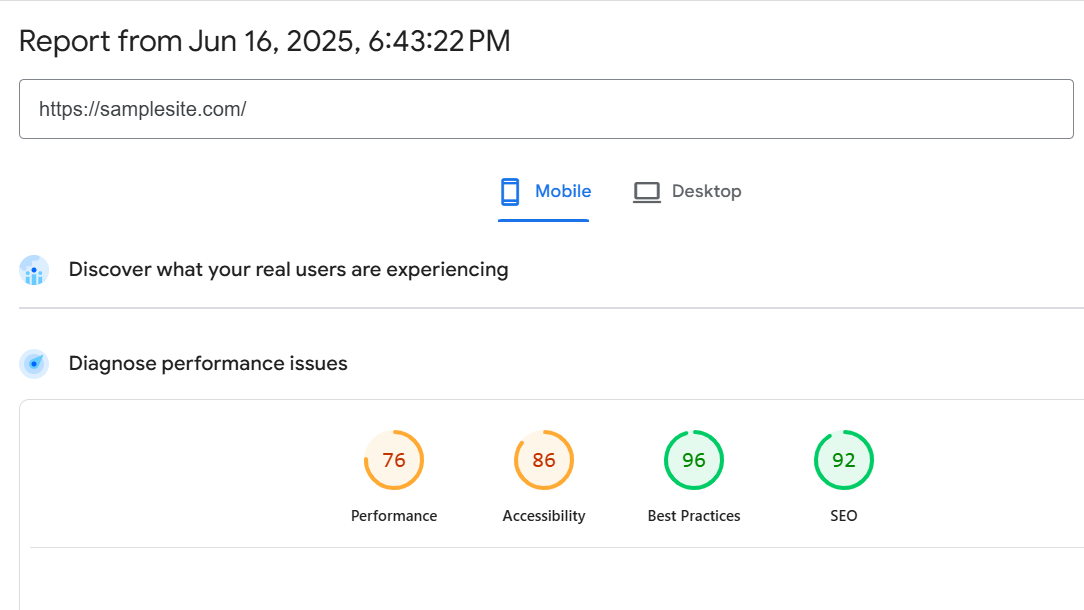Core Web Vitals—you’ve heard the term at some point, and have left it to your SEO professionals. But understanding these terms is extremely valuable, no matter what rung of the corporate ladder you’re on. Finding the data is a cakewalk, as is analyzing it and recommending fixes. But messing it up can have unpleasant consequences, reaching as far as your bottom line. Here’s a handy download on what core web vitals are, and why you should be aware of their digital impact.
What Are Core Web Vitals?
Core Web Vitals are a set of benchmarks created by Google, determining how easily users can navigate and experience a page or website smoothly. Maintaining them at the optimal level is essential for any page to stand a chance of ranking well, and retaining users. They’re also one of the elements you’d measure when conducting a DIY website homepage audit, signifying how easily accessible they are!
These metrics were formulated based on years of research and data analysis by Google to measure ideal user experience on websites. Three of the most essential factors that they account for are the page speed, interactiveness, and the overall visual stability. The purpose of these metrics is to provide a clear framework for developers and SEO professionals to provide the best possible user experience. When this is achieved, people are more likely to stay on a website and explore it.
How to Measure Core Web Vitals
One of the most effective tools to measure Core Web Vitals is PageSpeed Insights, which is free to use. All you need to do is visit the site, upload the URL you want to examine, and click the Analyze button! It shows you the exact scores for all the Core Web Vitals on that page for both desktop and mobile devices, alongside improvements to apply.

What Are the Key Metrics?
Largest Contentful Paint (LCP)
Website speed is among the catalysts of digital marketing efforts; get it wrong, and your strategy fails before it starts. That’s where the Largest Contentful Paint comes in—it measures how much time the biggest element on a page takes to load.
Let’s say you have a video embedded on a homepage. The faster the video loads, the better your LCP. A video that takes forever to load increases the chances of visitors bouncing off your site since, naturally, they aren’t going to wait for the video. If anything, a poor LCP gives visitors a reason to leave your site, increasing your bounce rate.
The ideal LCP score is 2.5 seconds and under. Anything beyond this will negatively affect the chance of your page ranking. If the LCP exceeds 2.5 seconds, you should take a look at what could be causing the high LCP, whether excessive media size or spotty code.
Interaction To Next Paint (INP)
INP refers to how responsive a page is to a user action, including clicking on buttons, forms, dropdown menus, etc. The ideal INP score is 200 milliseconds or less. A slightly higher score is one that can do with improvement, but anything above 500 milliseconds is considered poor and needs fixing.
Think of it this way. If someone clicks on a form and it won’t appear immediately, they’ll become impatient. They’ll either leave the site or visit a different page. You’ll lose out on potential leads and conversions, just because a form took time to appear.
Cumulative Layout Shift (CLS)
Sometimes, when visiting a site, you may notice some of the page elements suddenly move further down the page. This is called a layout shift. While some layout shifts are normal, excessive and unexpected shifts can be visually disorienting and also cause users to click on the wrong place. This can be annoying and frustrating, potentially driving the user away from your site.
Cumulative Layout Shift measures how much this is happening on a page. The ideal CLS score is 0.1 and below. Anything above that is marked as excessive.
The Role of Core Web Vitals In SEO
An essential for good on-page SEO, Core Web Vitals are one of the cornerstones to good user experience. They test loading speed, page responsiveness, and visual stability, ensuring that anybody who visits your page has a hassle-free interaction. This is why Google considers them prominent ranking factors. A page can have excellent content and use the right keywords, but still fail to rank on the SERP because the Core Web Vitals are poor.
However, just having good Core Web Vitals and lacking good content and the right keywords won’t make your page rank. Think of it this way. Content, keywords, images, etc. help a page get to a certain level in Google’s algorithm. Core Web Vitals simply provide that extra push that gets them to rank higher.
The Digital Impact of Core Web Vitals
Core Web Vitals serve as key ranking metrics as well as guides to making pages more user-friendly. Here are some of the main ways through which Core Web Vitals have a significant digital impact beyond ranking:
- Positive Website Experience - Core Web Vitals determine how visitors experience your website. If your scores are good, then they can navigate with ease, interact with different page elements with no difficulty, and get the most out of their visit. If your scores aren’t optimal, the user won’t take long to leave the slow-loading elements behind for one of your competitor’s sites.
- Sets A Benchmark For UI/UX - Core Web Vitals deal with several elements covered by UI/UX, across your on-page media. They help give direction to teams on how best to design pages and what goals they need to keep in mind while implementing their design. In turn, your site will reflect professionalism and trustworthiness, encouraging brand awareness and loyalty.
- Business Impact - Better website performance leads to smoother user journeys, and even slight improvements in metrics like Largest Contentful Paint (LCP) or First Input Delay (FID) can translate into measurable gains in sales, sign-ups, or time spent on site. Vodafone Italy, for example, realized their LCP was an area of concern. By improving it by 31%, they saw a higher number of visits and page interactions, which led to sales increasing by 8%!
- Better Mobile Performance - Mobile dominates the web today, and good mobile performance is one of the key elements for a good conversion rate. But, mobile users often face slower connections, lower processing power, and limited patience for delays. When a site is optimized for Core Web Vitals, it performs consistently across devices, regardless of screen size or bandwidth, leaving a good impression on the user.
Just remember, the purpose of these metrics is to help provide the ideal user experience. Use them not just to rank higher, but also to make sure you can provide the most visually appealing and easy-to-navigate site.
FAQs
What is a Core Web Vital?
A core web vital is a key metric used by Google to measure the optimal user experience on a website when they interact with it.
What Are the 3 Pillars of Core Web Vitals?
The three pillars are Largest Contentful Paint (LCP), Cumulative Layout Shift (CLS), and Interaction to Next Paint (INP). They measure site load speed, visual stability, and interactiveness, respectively.
What are LCP and CLS?
LCP (Largest Contentful Paint) refers to how much time the largest element on a page takes to load, and CLS (Cumulative Layout Shift) refers to how much elements on the page move around.
How Do Core Web Vitals Impact SEO?
Core Web Vitals are a set of metrics indicating to Google how user-friendly a site is. Good Core Web Vitals are a sign that users can navigate a website without hassle, making it more likely for people to visit it and interact more.
How Do I Pass Core Web Vitals?
The Largest Contentful Paint (LCP) score should be 2.5 seconds and under i.e. the largest page element should load within this time. The Cumulative Layout Shift (CLS) should be 0.1 and below, which means the page elements should not move around too much. Interaction to Next Paint (INP), should be 200 milliseconds and under.



